A knowledge session at the 2024 American Association of State Highway and Transportation Officials Annual Meeting in Philadelphia delved into a variety of safety countermeasures, methods, and policy approaches that can help “bend the curve” on traffic fatalities and injuries.
[Above photo by AASHTO]
Entitled “The Real ‘How-to’ on Translating Roadway Safety Ideas into Practice” and moderated by Jon Markt, senior traffic and transportation planner for engineering firm HDR, the session featured Nancy Daubenberger, commissioner of the Minnesota Department of Transportation; Jared Perdue, secretary of the Florida Department of Transportation; Tony Tavares, director of the California Department of Transportation or Caltrans; and Shanté Hastings, deputy secretary and chief engineer for the Delaware Department of Transportation.
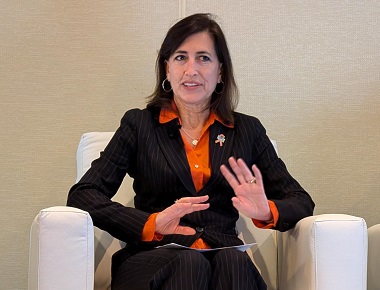
“Everybody has places they need to go to,” explained Minnesota DOT’s Daubenberger. “So we’re talking about all users about how we improve safety on every project. As part of that, we continue to implement our performance-based practical design to optimize the benefits of our [transportation] investments – including and especially their safety benefits. And then of course, we have our ‘Complete Streets’ principles and practices which are part of that update to the design manual.”
She said that, over the last few years “organizationally,” Minnesota DOT has been in the process of updating its road design manual – which the agency official calls its “Facilities Design Guide” – to take into account the safety needs of all transportation facilities, not just roadways.
“There are so many research findings coming at us that understanding and making sense of all of them, especially sometimes when they are conflicting, is a challenge,” Daubenberger noted. “So we are working to bridge that knowledge gap. For example, we’re looking now to set target speeds, but we don’t have all the knowledge in that area yet. Still, we can’t wait for all our research findings to tell us what we’re going to do. We can’t be paralyzed by not having all that information, yet, we need to use the information we do have responsibly. But we want to be bold in these areas to make sure we’re moving in a direction that’s going to increase safety on our system. That’s what we need to do.”
Caltrans’ Tavares noted that four years ago his agency began to a take a more centralized and coordinated approach to addressing safety across the state’s transportation network.
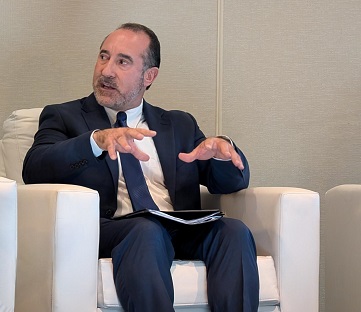
“Safety has always been our priority for decades. We had multiple programs, divisions, and districts working on very good safety projects, but there really wasn’t a coordinated effort across the department,” he explained. “So in 2020, we put together a strategic plan on how we would address safety more holistically and have a more focused approach. We established our first chief safety officer [position] in the department and that position pulled in all the different programs and divisions to really focus our efforts on safety. We put together a director’s policy on safety, and we implemented the safe systems approach as well. And with that safe systems approach, we’ve been able to develop our road safety action plan for the entire department.”
That included dedicating more funding, Tavares added. In 2012, he noted Caltrans put $125 million per year in funds towards safety projects. By 2021, however, Caltrans had more than tripled that to $450 million annually. “And just this past year we have committed $1 billion per year over the next 10 years to address safety. And we’re doing a lot of proactive safety; getting in front and identifying near-miss situations, looking at vulnerable road users, intersections along those main street roads that are state highways, and how we minimize and eliminate conflicts between vehicles and people who are walking, biking, rolling, or taking transit.”
And while the number of traffic fatalities from 2010 to 2022 did go up, Tavares said Caltrans is now seeing them decrease. “We had about a 9.4 percent decrease last year in fatalities, due no doubt to some of that funding and some of those [safety] projects being constructed,” he said. “And we hope between that, the educational component that we also work very hard with, and also with our highway patrol on the enforcement side on bringing speeds down, we will keep saving more lives.”
As part of a broader effort to encourage safety innovations to help reduce fatalities and injuries, Florida DOT’s Perdue explained that his agency embarked on an unusual “Shark Tank” style of approach.
“A lot of times in government, we have the potential to stifle innovation and ideas because of regulations and rules and all that,” he explained. “So one way we are trying to spark or incentivize innovation is we actually started up a ‘Shark Tank’ style technology event. We focused it directly on [highway] work zones, and we invited innovators to come in. They had a panel of judges to present an idea of how they think they could improve safety in a work zone, with the commitment from our agency to find them a path to quickly pilot their idea.”
Perdue said Florida DOT just started this “Shark Tank” initiative six months ago, which the agency has dubbed the “Safety Workzone Innovations for Today and Tomorrow” or “SWIFTT” Challenge, as but one small way to break through barriers that might stifle transportation safety innovations. “It is about finding a way to get from concept to implementation very quickly using the spirit of competition,” he said. “And then, over time, we start to refine those ideas based on what we learn from implementing them.”
Yet Perdue also stressed that part of the problem facing efforts to reduce the crashes that cause fatalities and injuries – what he describes as a “very complicated scientific problem” – is that crashes are largely dependent on behavior.
“And no matter how much safe infrastructure we build, behavior is always going to be one of the major contributing factors in crashes,” he said. “And so in terms of campaign and messaging, the last two years we’ve been doing extensive research in behavioral science, and we’ve brought in psychologists and behavioral science experts and have begun researching demographics to find ways to help change behaviors.”
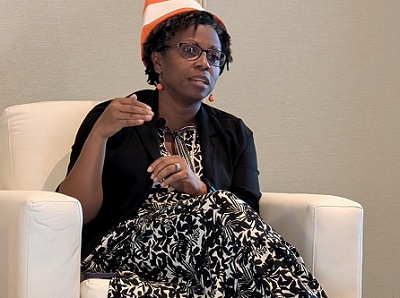
Delaware DOT’s Hastings said one way her agency is trying to instill more positive traffic behaviors is to engage more children in traffic safety outreach efforts.
“An idea we stole from the Georgia Department of Transportation is their K through 12 curriculum and we are disseminating it to kids of all ages because we’ve got to change the behaviors to Jared’s point,” she said.
“And so my kids know that when you get in a car, you put your seatbelt on. They’ve been trained. But not all kids are like that. Not all kids have that exposure,” Hastings said. “And so that’s one thing that we’re excited about. We learned about it at the [AASHTO 2023] Safety Summit, and we’re pumped to get that started and get that into our department of education. Because really we need to just start changing the behaviors and the thought process around safety, and it starts at all ages, really.”
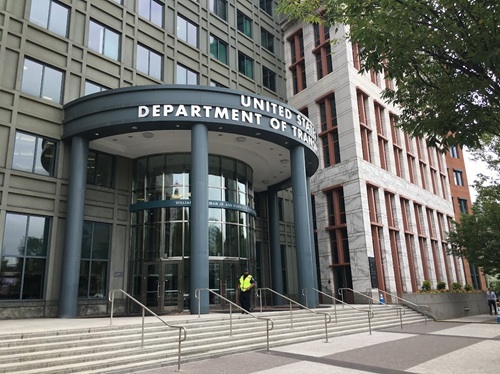 Top Stories
Top Stories
USDOT Issues $1B in Local Road Safety Funding
January 2, 2026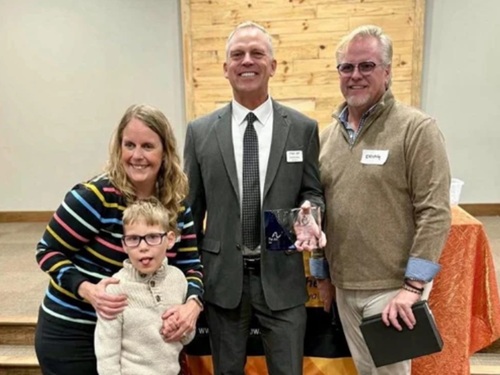 Top Stories
Top Stories

